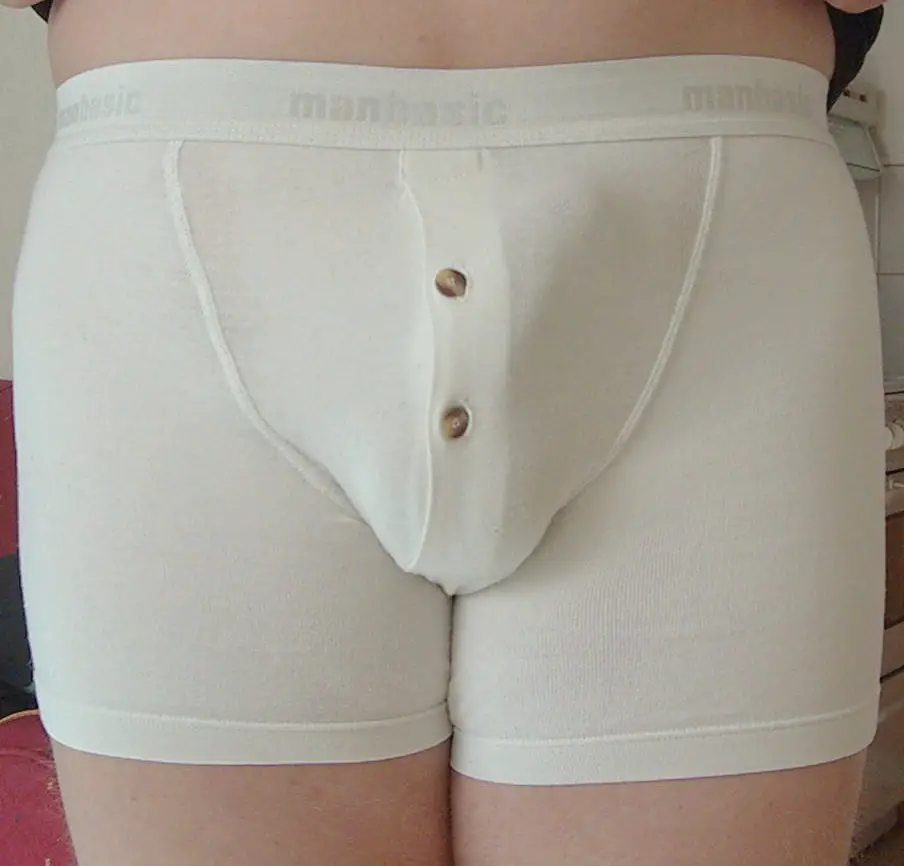How To Wear Male Incontinence Pads

Male incontinence pads are designed to be worn beneath a man’s regular underwear and provide absorbent protection against light to moderate bladder leakage. These pads can be a discreet and comfortable solution for men who experience occasional urinary incontinence. Wearing male incontinence pads correctly is an important step in managing the condition. This guide will provide instructions on how to wear male incontinence pads properly.Male incontinence pads are absorbent products specifically designed for men who suffer from urinary incontinence. They are worn like regular underwear and protect against urine leakage, providing a discreet solution to managing incontinence. Male incontinence pads come in various sizes and absorbencies to meet individual needs, making them a comfortable and reliable way to manage urinary incontinence.
Choosing the Right Incontinence Pad for You
When it comes to incontinence, choosing the right pad can be a challenge. Whether you choose an absorbent pad or an absorbent underwear, it is important to choose the right one for your needs. Absorbent pads come in a variety of sizes and absorbency levels, so it is important to choose the one that best meets your needs. Here are some tips on choosing the right incontinence pad for you:
The first thing you should consider when selecting an incontinence pad is the level of absorbency you need. If you have light bladder leakage, then a light-absorbency product may be sufficient. However, if you have heavy bladder leakage, then a higher-absorbency product may be necessary. Also, consider how often you will need to change your pad and how often it will need to be washed.
Another factor to consider is how comfortable the pad is. Choose a product that fits snugly against your body and doesn’t cause irritation or chafing. Look for breathable materials that allow air flow and help keep skin dry.
Finally, consider cost when selecting an incontinence pad. Some products are more expensive than others, so it’s important to find one that fits within your budget while still providing the protection and comfort you need.
By taking into account these factors when selecting an incontinence pad, you can ensure that you get the protection and comfort that best meets your needs. With a little research and understanding of what type of product will work best for you, finding the right incontinence pad can be easy!
How to Wear an Incontinence Pad
Wearing an incontinence pad can be a simple way to manage bladder and bowel incontinence. It is important to wear the pad correctly in order to ensure that it works as it should and that you remain comfortable and dry. Here are some steps for how to wear an incontinence pad:
First, make sure that your skin is clean and dry before applying the pad. If you need help cleaning your skin, ask your healthcare provider for advice about what products are best for you. After cleaning, use a towel or cloth to pat the area around the urethra dry.
Next, remove the adhesive backing from the pad and position it directly against your skin. Make sure that the adhesive side of the pad is touching your skin so that it will stay in place once applied. You may need help with this step, especially if you have difficulty reaching certain areas.
Finally, ensure that all edges of the pad are secure against your skin by gently pressing down on them with your fingers or palms. This will help prevent any leakage from occurring and will ensure that you stay dry throughout the day. After this step is complete, you can put on clothing over top of the pad if desired.
By following these steps, wearing an incontinence pad can be a simple way to manage bladder and bowel incontinence. When worn correctly, these pads can provide protection from leaks while still allowing you to remain comfortable throughout the day.
Preparing Your Skin for an Incontinence Pad
Having incontinence can be a difficult and embarrassing issue to deal with. However, taking the proper steps to care for your skin can help you manage your condition more comfortably and confidently. One of the most important steps in skin care is to prepare your skin for an incontinence pad. Here are some tips on how to do this:
Firstly, make sure that you clean your skin regularly with mild soap. This will help reduce bacteria and prevent any potential irritation from the pad. If you find that your skin is particularly sensitive, consider using a soap free cleanser or a moisturizing cream specifically designed for sensitive skin.
Then, you’ll want to apply a barrier cream or ointment before putting on the pad. This will help to protect your skin from any moisture that may be present in the pad, as well as reducing friction which can lead to soreness and irritation. Be sure to use a product specifically designed for use with incontinence pads as these products are specially formulated to be safe for sensitive skin.
Finally, once the barrier cream has been applied it’s time to put on the incontinence pad. Make sure you choose one that is suitable for your level of incontinence and fits securely around the body in order to prevent any leakage. After putting on the pad it’s important to check regularly throughout the day for any signs of irritation or redness, and if necessary change the pad more frequently than recommended in order to keep your skin healthy and comfortable.
By following these simple steps you can ensure that your skin remains healthy when using an incontinence pad and allow yourself peace of mind knowing that you have taken all necessary precautions in order to minimize any potential discomfort or irritation caused by prolonged wear of an incontinence pad .
Putting on an incontinence pad correctly
Putting on an incontinence pad correctly is essential for maximum absorbency and comfort, as well as preventing skin irritation. The following steps should be taken when putting on the pad:
1. Start by washing and drying your hands thoroughly.
2. Open the package carefully, making sure not to tear the pad.
3. Place the adhesive strip of the incontinence pad against your underwear, with the top of the pad facing towards your belly button.
4. Smooth out any wrinkles or air bubbles in the pad to ensure a snug fit against your body.
5. Secure the adhesive strips to your underwear, making sure that they are firmly attached and won’t come loose during movement or activity.
6. Finally, check that there are no gaps between your body and the incontinence pad, as this could cause leakage.
By following these simple steps you can be sure that you are using your incontinence pads correctly and getting maximum absorbency and comfort from them.

Adjusting the Incontinence Pad
Adjusting the incontinence pad is an important part of ensuring that it offers the best possible protection. When putting on a pad, it is important to ensure that it is correctly adjusted to the body. To do this, start by placing the pad against the body and then using the adjustable straps to secure it in place. The straps should be tight enough to hold the pad securely but not so tight that they cause discomfort. Once the straps are secured, double-check that the pad is snugly against the body and that there are no gaps or spaces between it and the skin.
Securing the Incontinence Pad
Once the incontinence pad has been adjusted, it needs to be secured in place. This can be done by using adhesive tapes or other fastening mechanisms such as hook-and-loop fasteners or buttons. Adhesive tapes offer a secure hold but should be checked regularly to ensure they are still firmly attached and not slipping off or coming loose. Hook-and-loop fasteners can also provide a secure fit but may require some adjustment over time as they may loosen with wear and tear. Buttons can also be used to secure incontinence pads but may require more frequent adjustment than other fastening mechanisms.
Changing an Incontinence Pad
Changing an incontinence pad is an essential part of managing bladder or bowel incontinence. The process is simple and should be done regularly to ensure optimal hygiene and comfort. First, remove the old pad and discard it in the appropriate receptacle. Next, clean your skin with a gentle cleanser and warm water to remove any urine or stool residue. Once the skin is clean, apply a new incontinence pad, ensuring that it fits snugly against the body with no gaps. Finally, adjust any straps or tapes as necessary for optimal comfort and hold the pad in place.
Discarding an Incontinence Pad
Discarding an incontinence pad properly is essential for proper hygiene and waste management. First, carefully roll up the used pad while avoiding contact with any feces or urine residue. Next, place the pad into a sealed bag or container to prevent odors from escaping. Then dispose of the bag in the designated waste receptacle for safe disposal. Finally, wash your hands thoroughly with soap and warm water to ensure that all contaminants have been removed from your skin.
Wearing Male Incontinence Pads Comfortably
Using incontinence pads can be a great way to manage bladder weakness. It is important for men to feel comfortable and secure when they are using these pads. Here are some tips for wearing male incontinence pads comfortably:
The first step is choosing the right size and type of pad. The size of the pad should be appropriate to the amount of urine that needs to be absorbed. Pads come in different sizes and styles, so it is important to find one that fits properly and does not cause any discomfort or irritation.
It is also important to ensure that the incontinence pad is changed often to avoid skin irritation. The pad should be changed as soon as it becomes damp, and if it gets too wet, it should be changed immediately. This will help prevent skin irritation and ensure that the wearer remains comfortable throughout the day.
It is also important to wear underwear that fits properly when wearing an incontinence pad. Wearing underwear that is too tight or too loose can cause discomfort or lead to leaking. It is best to choose underwear that fits snugly but still allows for air circulation.
Finally, it is important to practice good hygiene when using an incontinence pad. It should be washed after each use with warm water and mild soap, followed by an application of an antifungal cream if needed. This will help keep skin healthy and prevent irritation caused by bacteria or fungi.

Conclusion
Male incontinence pads are a great way to manage bladder leakage and provide the needed security and convenience. Incontinence pads come in a variety of sizes, shapes, and absorbency levels to suit your individual needs. To ensure the best fit, measure your waist and hips to get an idea of the size you need.
When it comes to wearing male incontinence pads, make sure you choose a breathable pair of underwear that will help keep the pad in place and allow air flow. Additionally, you may want to consider adding a liner or booster pad to your current incontinence pad for extra protection.
Finally, it is important to change your incontinence pad regularly to avoid skin irritation or infection. Keep some spare pads handy so that you can change them as soon as they become wet or soiled. With the right steps, male incontinence pads can help you stay dry and comfortable all day long.
